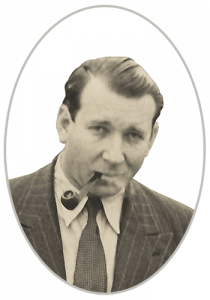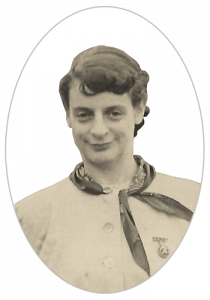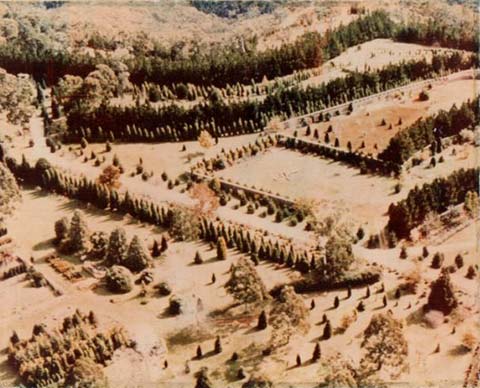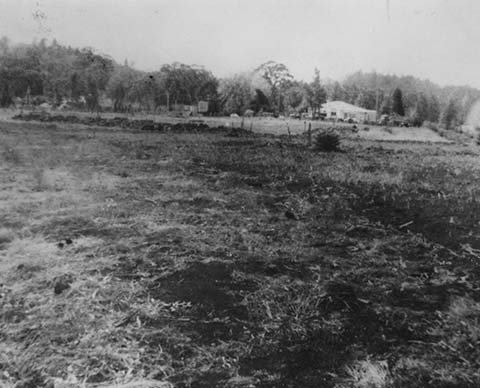History
The property comprises 17 separate lots that were purchased in the 1960s by the late Tom Breen (Snr) and his wife Charlotte. Tom had visited Mount Wilson as a boy, was inspired by its beauty, and in the early 1960s, with Charlotte, commenced fulfilling his dream to create a significant home and garden estate there.

With the exception of the section of the garden called Talbingo, a 3.7 ha lot which was planted with a number of exotic trees by the Marcus Clark family in the 1930’s, the properties from which the Gardens were developed at the time of purchase, comprised cattle paddocks, a local rubbish tip and bushland. There was a small cottage, and this was subsequently expanded into the current family residence. The rest of the land was completely undeveloped. Breenhold now comprises approximately 15 hectares of cultivated gardens, 18 hectares of parkland and 12 hectares of native bushland, divided roughly in the middle by Mount Wilson’s main road – “The Avenue”.

Tom (Snr) was born in 1914 and died in 2002. His earlier career path was as a Sydney newspaper journalist, encompassing ballet & theatre criticism, political reporting and commentary for the Sydney Morning Herald, The Sun, and Art in Australia, among other journals. His second career, commencing in the early 1950’s, was industrial, when he founded a construction sand company at Kurnell. This supplied building and specialised industrial sand throughout Sydney for over 50 years, including the sand for the concrete in the Sydney Opera House.
The company has subsequently diversified into site rehabilitation, construction materials recycling, land subdivision and development.
 Charlotte, known as “Bill” (1912 – 1968) was an accomplished sculptor, exhibiting her work in several public exhibitions, including the Society of Artists Exhibition in 1933. It was through a collection of ceramic figurines she produced in 1940 of dancers in the visiting Ballet Russes company that she and Tom met. In the 1960s they began the development of Breenhold together only a few years before she prematurely died. For Tom, Breenhold became a living memorial to his late wife. An obelisk to her memory stands at “Bill’s Point Lookout” on the western boundary of Breenhold.
Charlotte, known as “Bill” (1912 – 1968) was an accomplished sculptor, exhibiting her work in several public exhibitions, including the Society of Artists Exhibition in 1933. It was through a collection of ceramic figurines she produced in 1940 of dancers in the visiting Ballet Russes company that she and Tom met. In the 1960s they began the development of Breenhold together only a few years before she prematurely died. For Tom, Breenhold became a living memorial to his late wife. An obelisk to her memory stands at “Bill’s Point Lookout” on the western boundary of Breenhold.
The lookout affords panoramic views across the Blue Mountains National Park stretching below it.
Tom Breen visited many of the great gardens of Britain, Italy and France in the 1970s and drew some of his inspiration for Breenhold from these historic garden designs.
Since 1995 their son, Tom, with his family, continues to manage, maintain and further develop Breenhold Gardens, essentially fulfilling the expression of his father’s original expansive vision for the property. Tom and his family have also visited a number of the great garden estates in the USA, Britain, Europe and Australia for ongoing design ideas and additional horticultural inspiration.
Being able to share Breenhold with the public provides a great deal of additional enjoyment to its owners and staff.

1970s aerial photo of Breenhold

Breenhold 1965
Foreground – where Socrates Garden stands today
Heritage & Ornamental Features
Heritage listed Breenhold has several links to Sydney’s earlier history and to the colonial artisanship of the past both in Australia, and from Europe. Details of these can be found through the links to specific locations in Breenhold’s Garden Plan.
There are several other architectural echoes of Sydney’s past in the Gardens, some yet to be reconstructed on site. These include two large pink granite columns from the original AMP building that stood at Sydney’s Circular Quay from the late 19th century until the mid 1960s. There is also a Victorian copper domed cupola supported by sandstone columns and base. The cupola originally was atop the Criminal Investigations Branch building, located on the corner of Hunter and Elizabeth Streets before it was demolished in the 1960s. Numerous antique English Coalbrookdale cast iron seats and Italian urns also grace the Garden, and its several pools.
The history of the Mount Wilson village can be found on the Mount Wilson website www.mtwilson.com.au.
